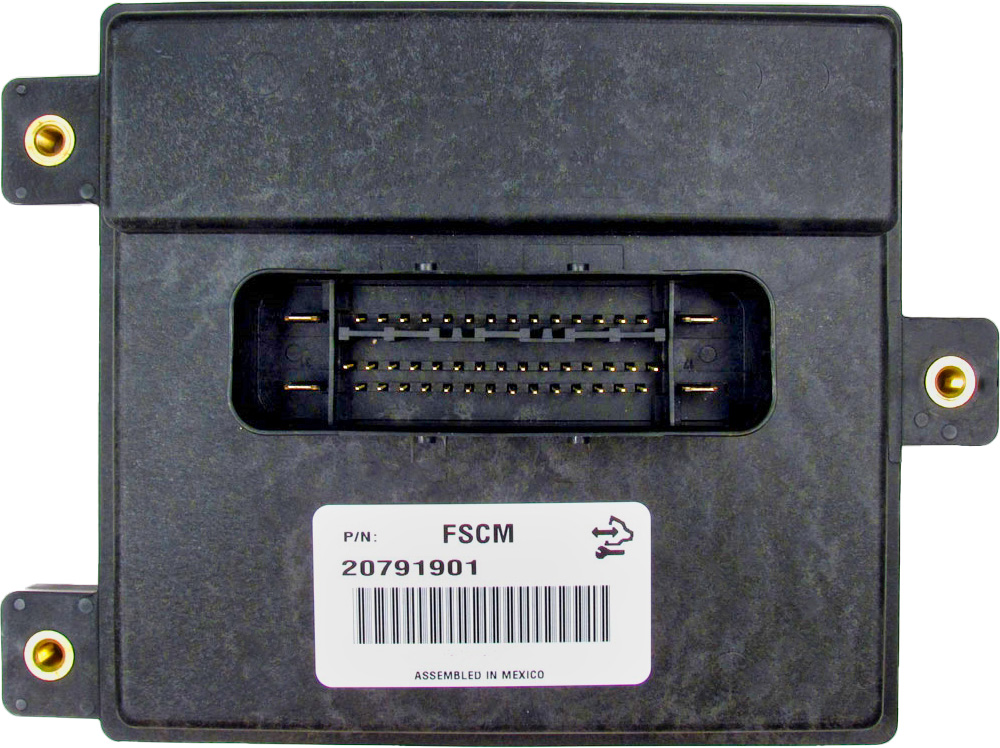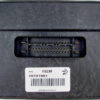Is Your GM Truck or SUV Stalling, Hesitating, or Refusing to Start?
There’s nothing more frustrating than an unreliable vehicle. If you’re experiencing a crank-no-start condition, sudden stalling in traffic, or a persistent Check Engine Light, the root cause may not be the fuel pump itself, but its controller. The Fuel Pump Control Module (FPCM), also known as a Fuel System Control Module (FSCM), is the electronic brain that manages fuel delivery to your engine. When it fails, it can mimic a bad fuel pump, leading to costly and incorrect repairs. This module is a direct-fit, VIN-programmed solution for a wide range of GM vehicles, designed to restore performance and reliability without a trip to the dealership.
The Critical Role of Your Fuel Pump Control Module
In modern vehicles like your GM truck or SUV, the fuel system is highly sophisticated. Instead of running the fuel pump at full speed all the time, the FPCM uses Pulse Width Modulation (PWM) to precisely regulate the voltage and speed of the pump. It receives commands from the main Engine Control Module (ECM) and adjusts fuel flow based on engine load, speed, and other critical parameters. This efficient system reduces wear on the fuel pump, decreases heat in the fuel tank, and improves overall fuel economy. However, because these modules are often mounted on the vehicle’s frame rail, they are exposed to harsh conditions—water, road salt, and vibrations—which can lead to internal corrosion and electronic failure over time.
From the Diagnostic Bay
We had a 2008 Silverado 1500 towed in last month. The customer was convinced his new in-tank fuel pump was faulty because the truck would crank but never start. He had just replaced it himself over the weekend. A quick scan of the computer revealed a DTC P069E: “Fuel Pump Control Module Commanded Off.” We hoisted the truck and found the FPCM on the driver’s side frame rail, its aluminum casing swollen and covered in white, chalky corrosion. A test light confirmed it had power and ground, but there was no output to the pump. The module had failed internally. We installed a new, VIN-programmed FPCM, and the truck fired up on the first try. The customer could have saved a lot of time and money by diagnosing the module first—a very common point of failure.
Diagnosing a Failing 2009 Outlook Fuel Module
A failing FPCM can create a variety of confusing symptoms. Because it directly controls the fuel pump, any issue with the module will immediately impact fuel pressure and engine performance. If you’re experiencing any of the following issues, your Fuel Pump Control Module is a likely culprit.
Common Symptoms of FPCM Failure:
- ✔ Engine Cranks but Will Not Start: The most common symptom. The FPCM is not commanding the fuel pump to turn on, resulting in zero fuel pressure.
- ✔ Sudden Stalling: The engine may run fine and then suddenly stall, often without warning. This can happen while driving or at an idle.
- ✔ Hesitation and Stumbling: During acceleration, the vehicle may hesitate or feel like it’s losing power as the module fails to command the necessary increase in fuel flow.
- ✔ Reduced Power and Performance: A general lack of power, poor throttle response, and decreased fuel economy can indicate the FPCM is not operating the fuel pump efficiently.
- ✔ Check Engine Light (CEL): A failed FPCM will often trigger specific diagnostic trouble codes. Common codes include P069E, P0230 (Fuel Pump Primary Circuit Malfunction), and U0109 (Lost Communication With Fuel Pump Control Module).
The Plug-and-Play Solution
The biggest challenge when replacing an FPCM is the required programming. A new module from the dealership is a blank slate; it must be electronically configured to your vehicle’s specific VIN using proprietary tools, adding hundreds of dollars in labor costs to the repair. Our modules eliminate this step entirely. We flash the module with the latest GM software updates and program it to your exact VIN before it ships. This means when you receive the part, it’s ready for a simple, direct installation. Just bolt it on, plug it in, and turn the key.
Compatible Part Numbers:
This module is a direct replacement for the following GM part numbers: 13501024, 15213110, 20759945, 20850907, 25785013, 25854536, 25866052, and 25967325.
Frequently Asked Questions
Do I need to get this module programmed?
No. This is the primary benefit of our service. We program the module to your vehicle’s specific VIN before shipping it to you. It arrives ready for installation, requiring no additional programming or dealership visit.
Where is the FPCM located on my vehicle?
On most GM trucks and full-size SUVs (like the Sierra, Silverado, Tahoe, Yukon, Escalade), the FPCM is typically mounted on the driver’s side frame rail, near the spare tire. On other models like the Traverse or Acadia, it may be on a rear crossmember. Always consult a repair manual for your specific vehicle to confirm the location.
How do I provide my VIN for programming?
After you complete your purchase, simply send us a message with your 17-digit Vehicle Identification Number (VIN). We cannot ship your order until we receive this information, as the programming is essential for the part to function correctly.
Is this a more reliable fix than just replacing the fuel pump?
If the FPCM is the true cause of your fuel delivery issue, then yes. Replacing the fuel pump will not solve a problem caused by a faulty control module. Diagnosing symptoms like a no-start condition or codes like P069E correctly can save you from replacing a perfectly good fuel pump.
What tools are needed for installation?
Installation is typically straightforward. You will need basic hand tools, such as a socket set, to unbolt the old module and install the new one. The most important step is to disconnect the vehicle’s battery before beginning the repair to ensure safety.



